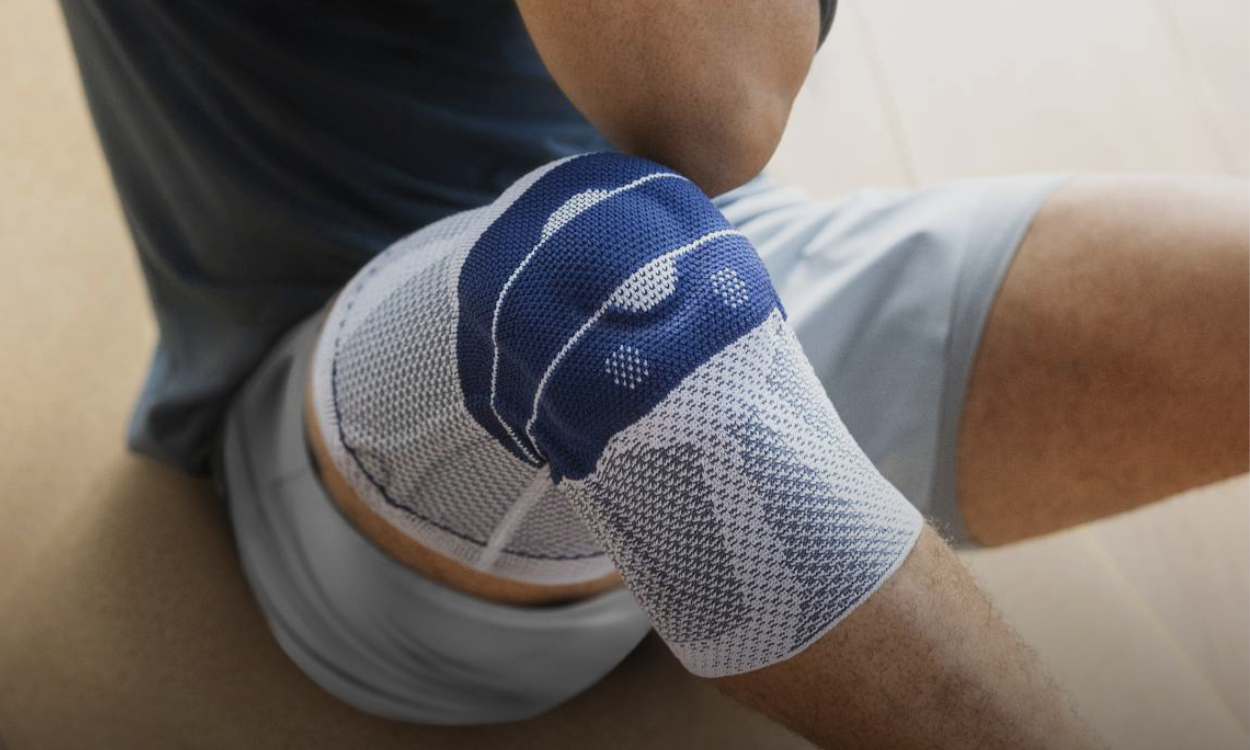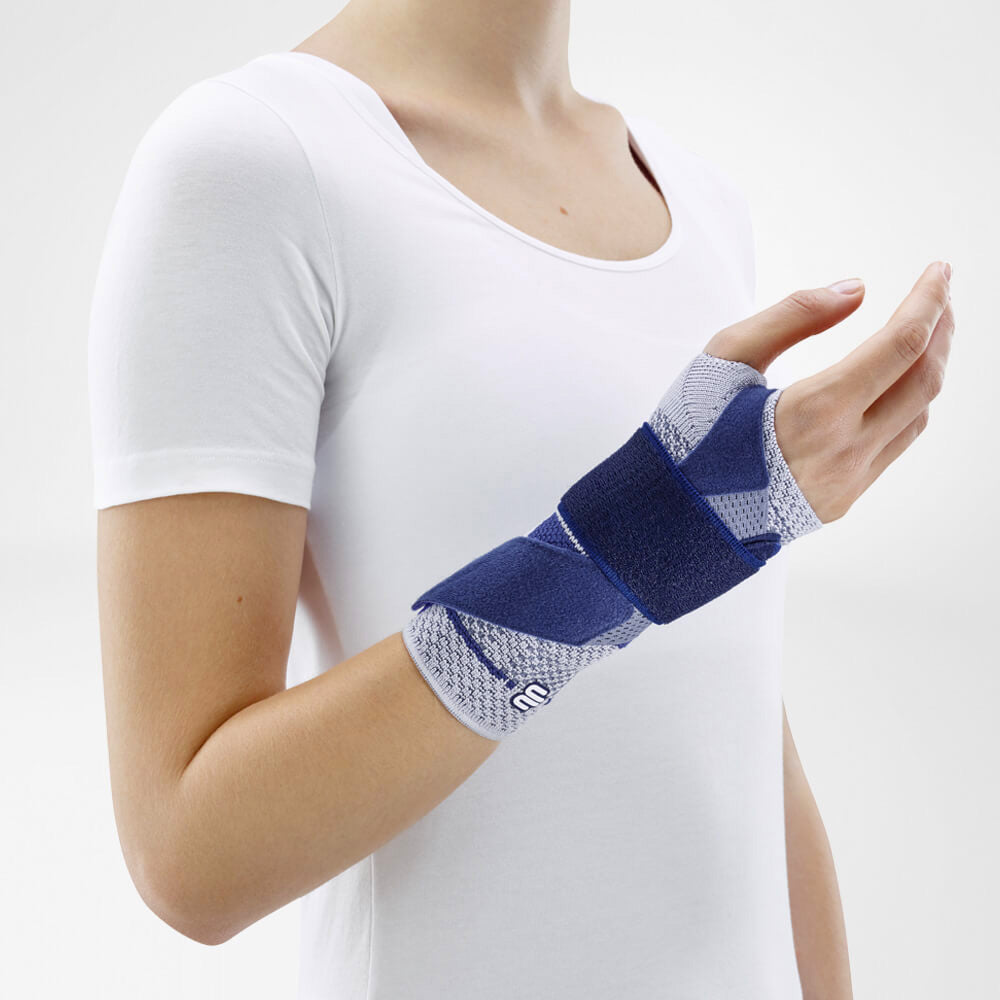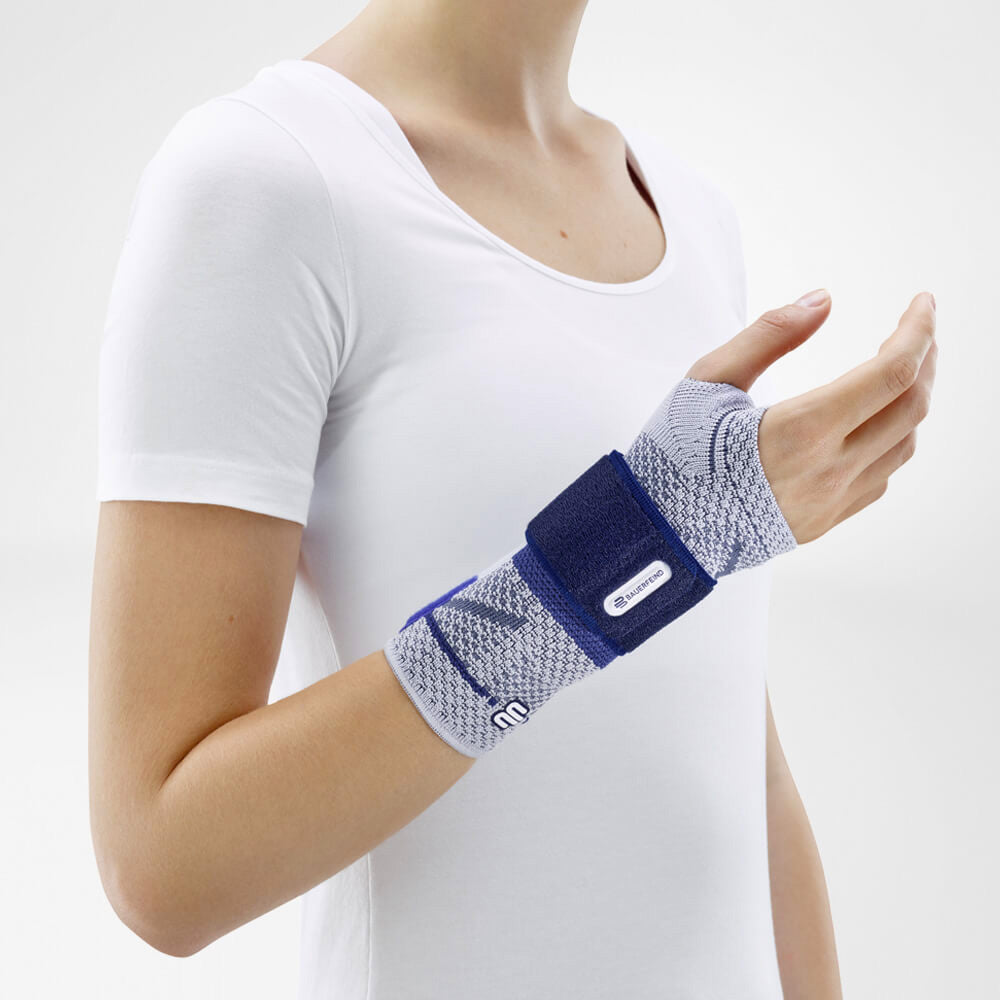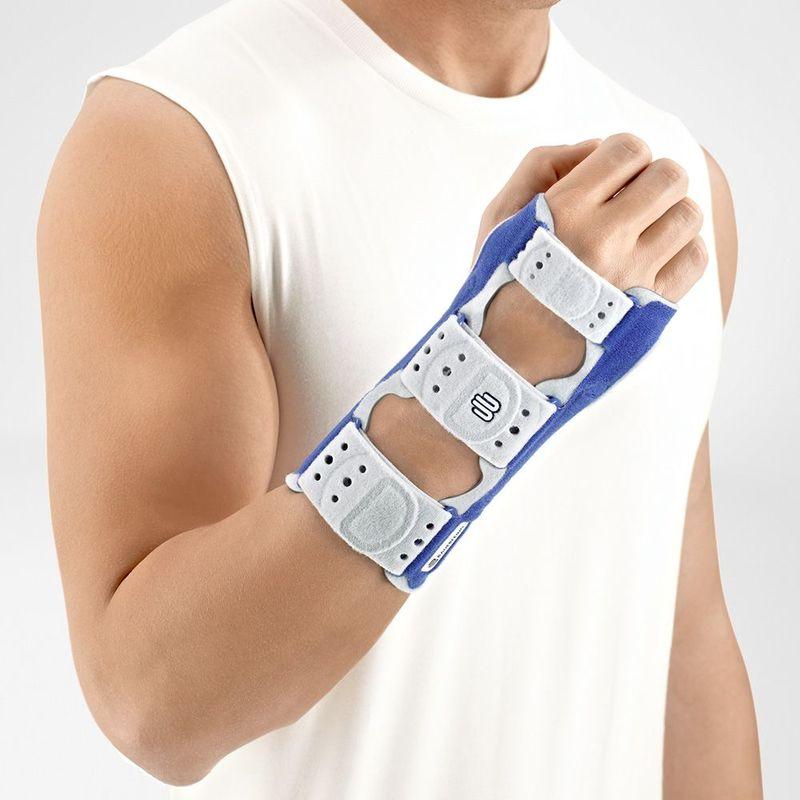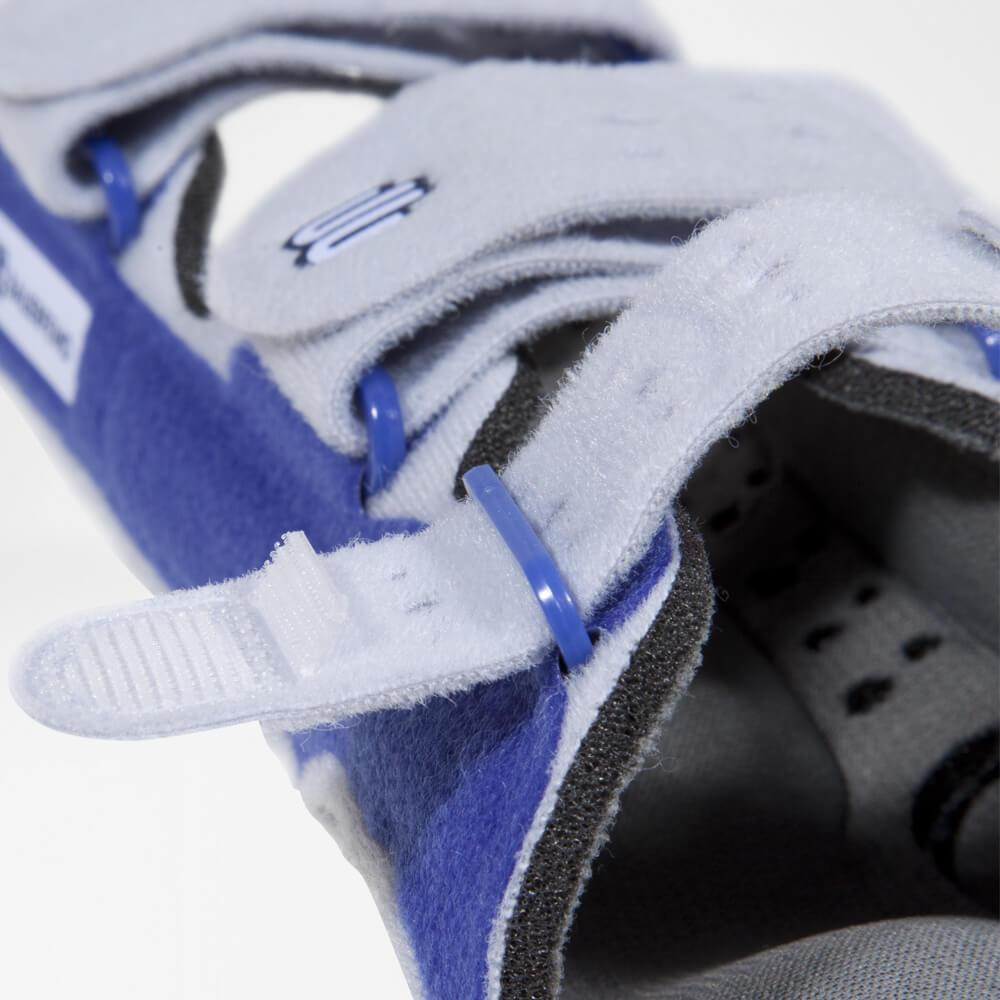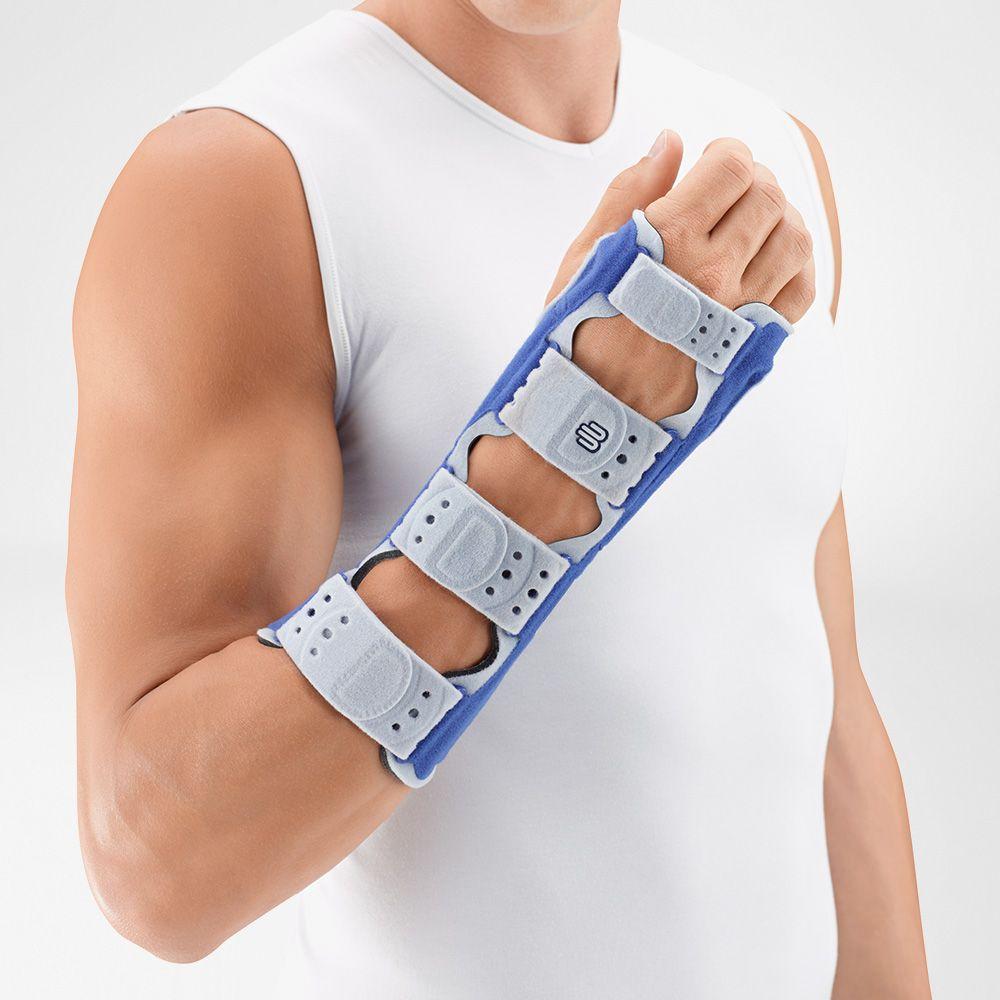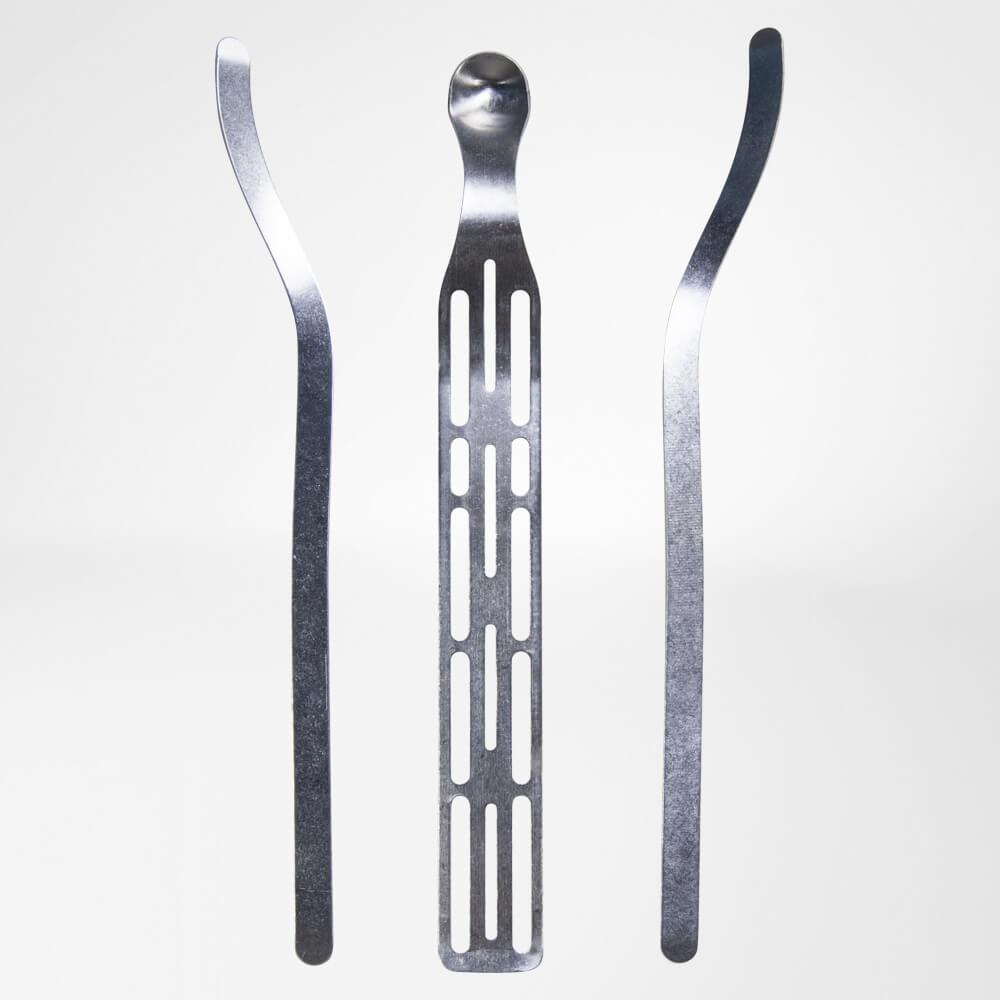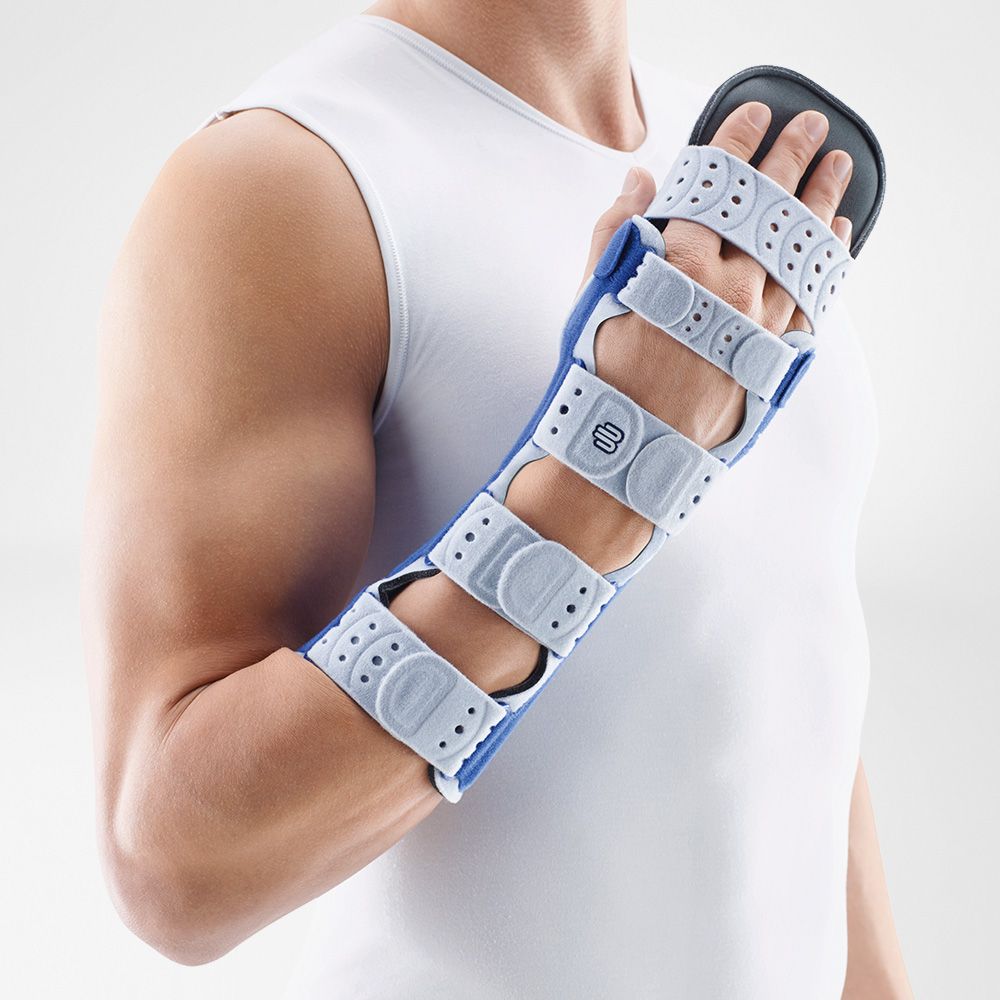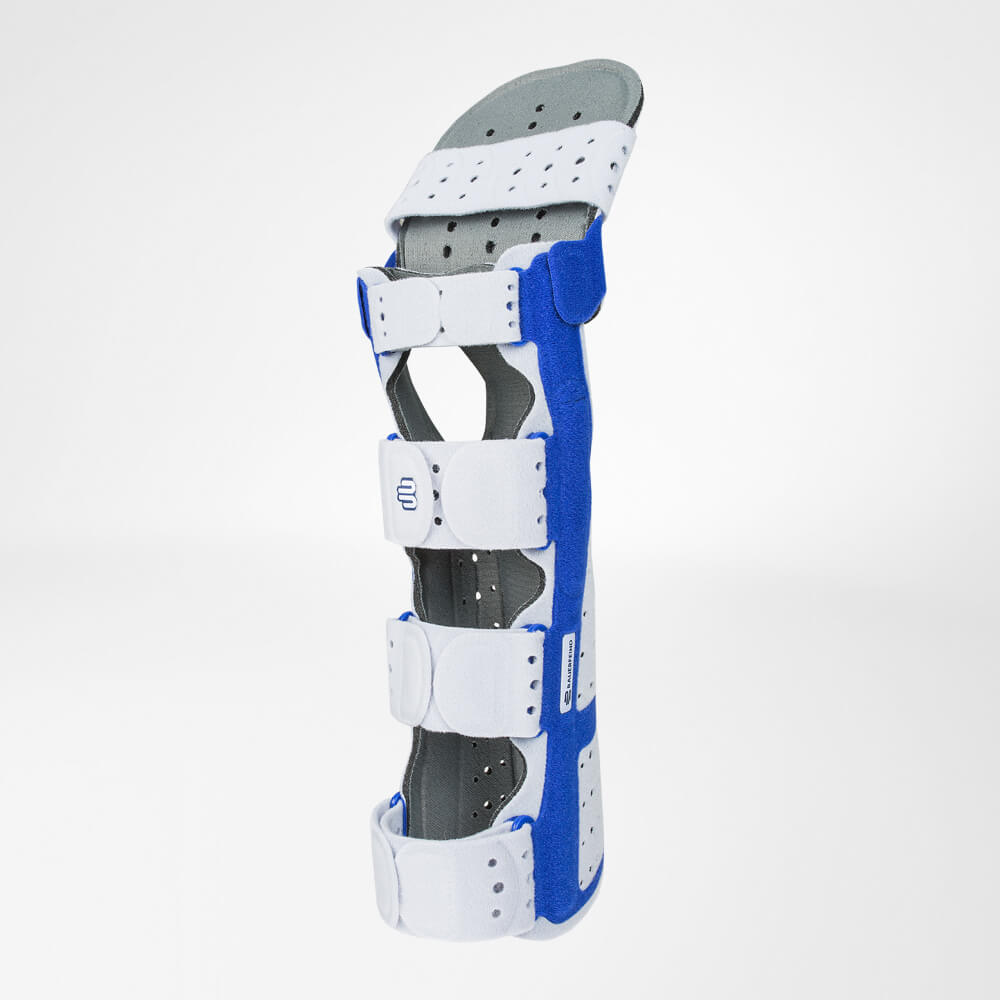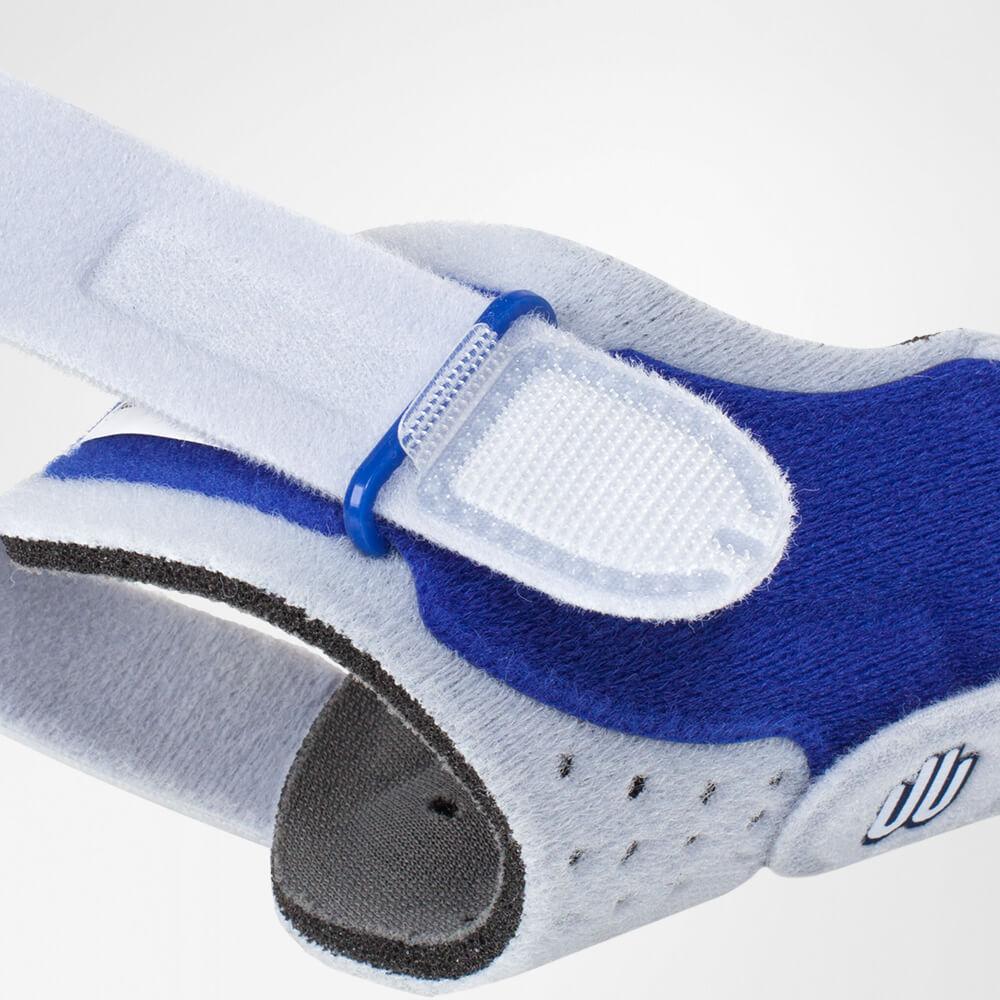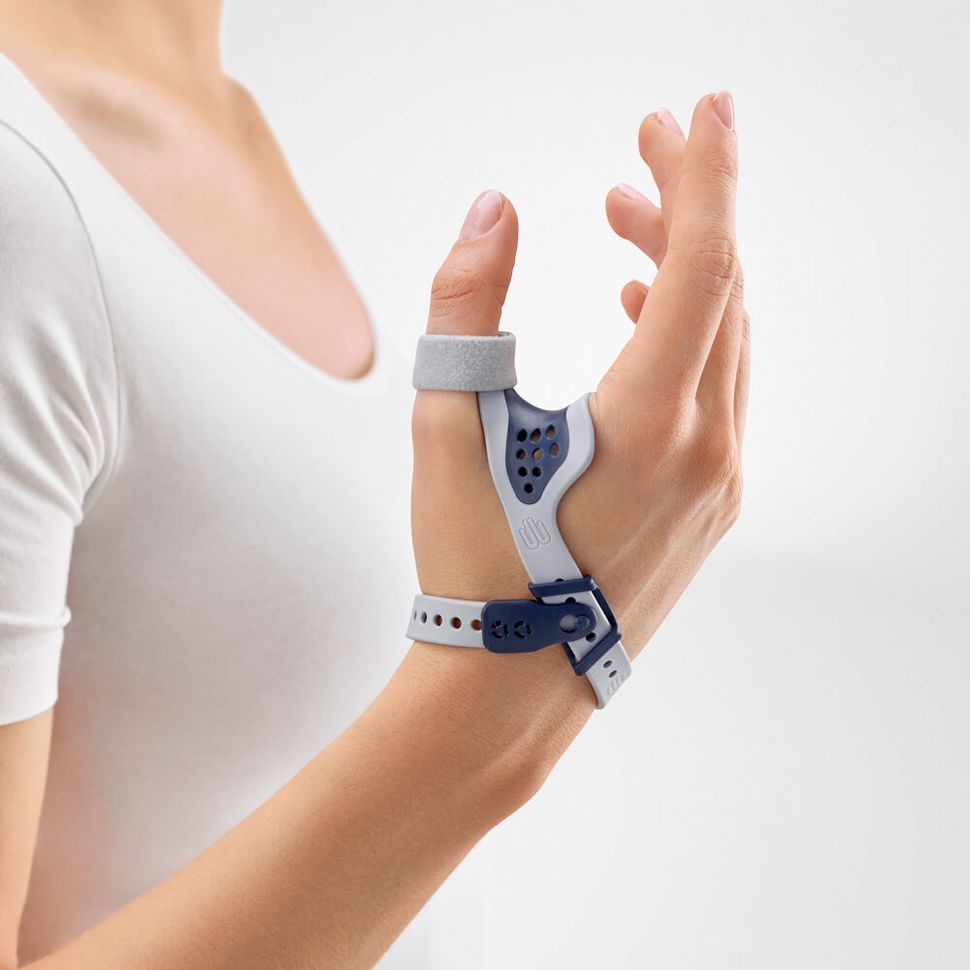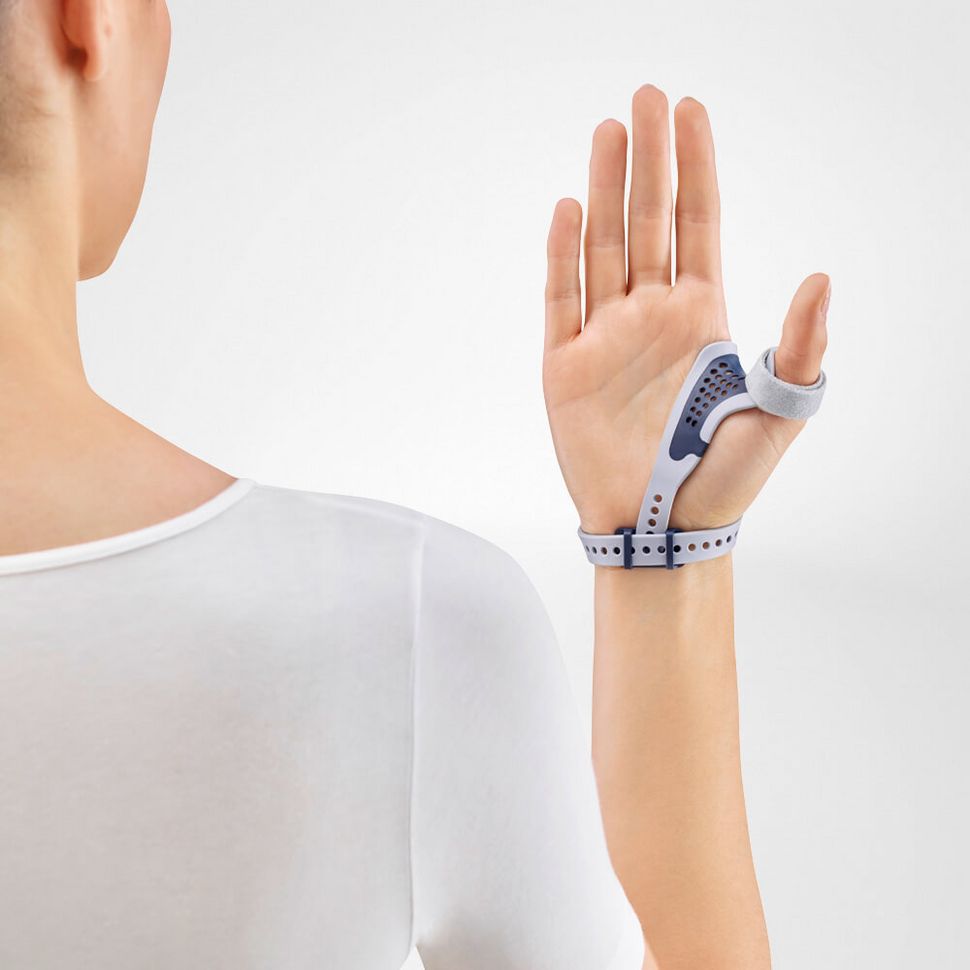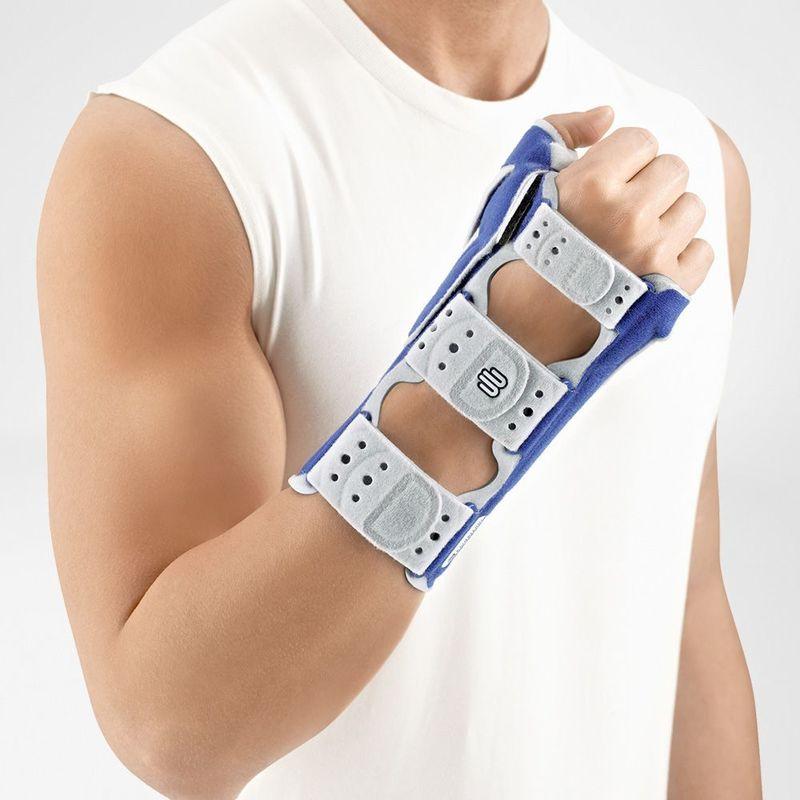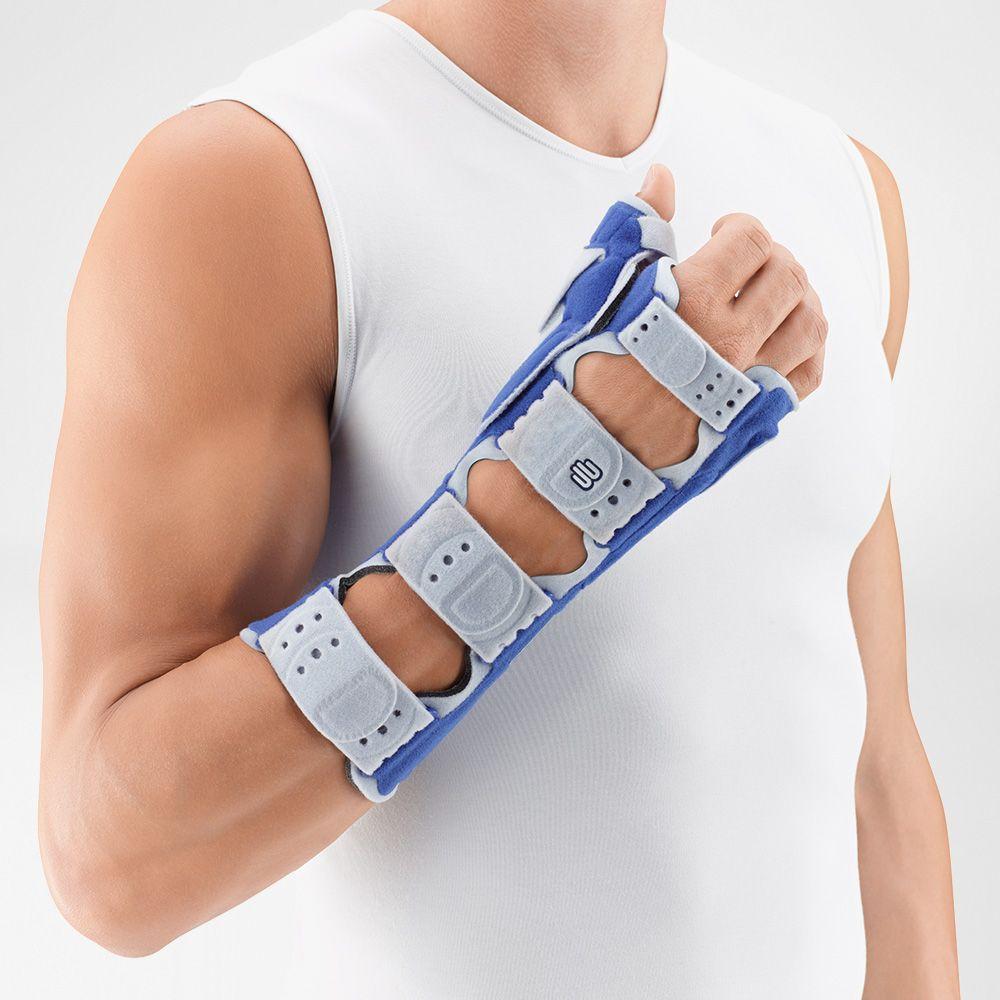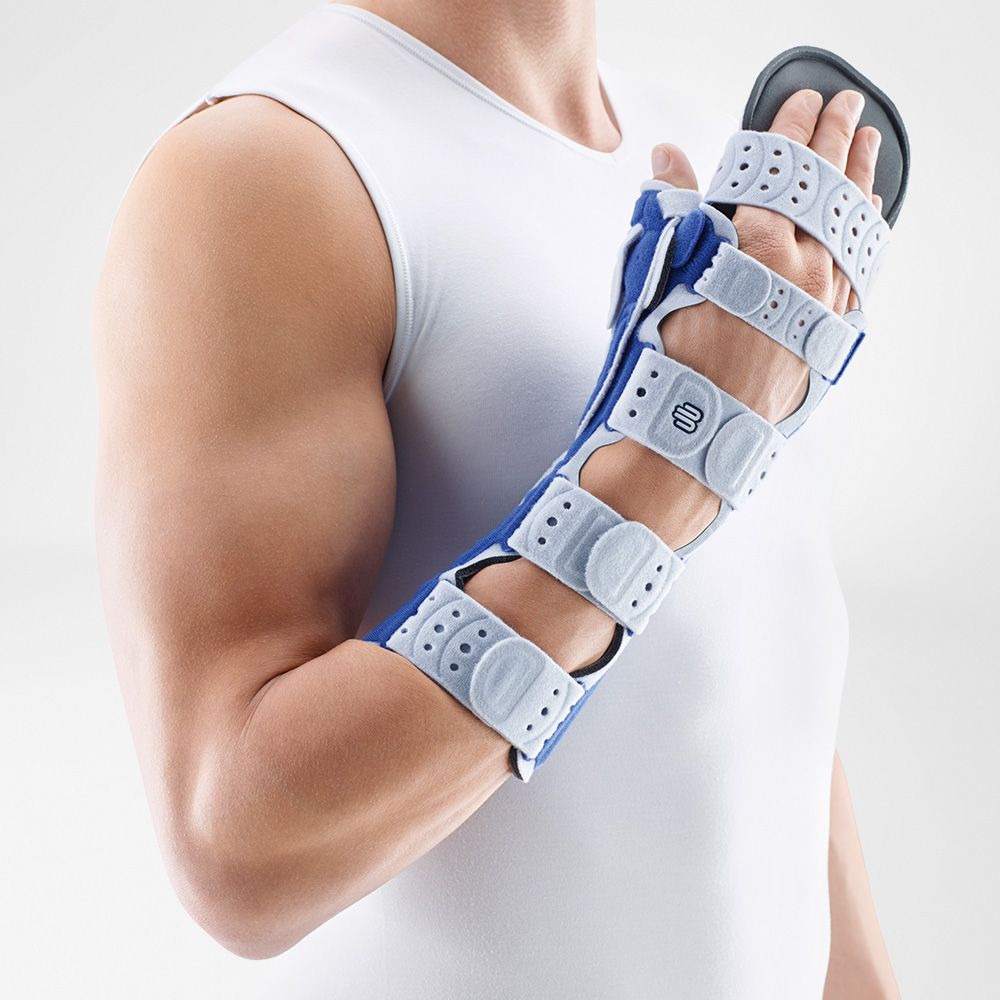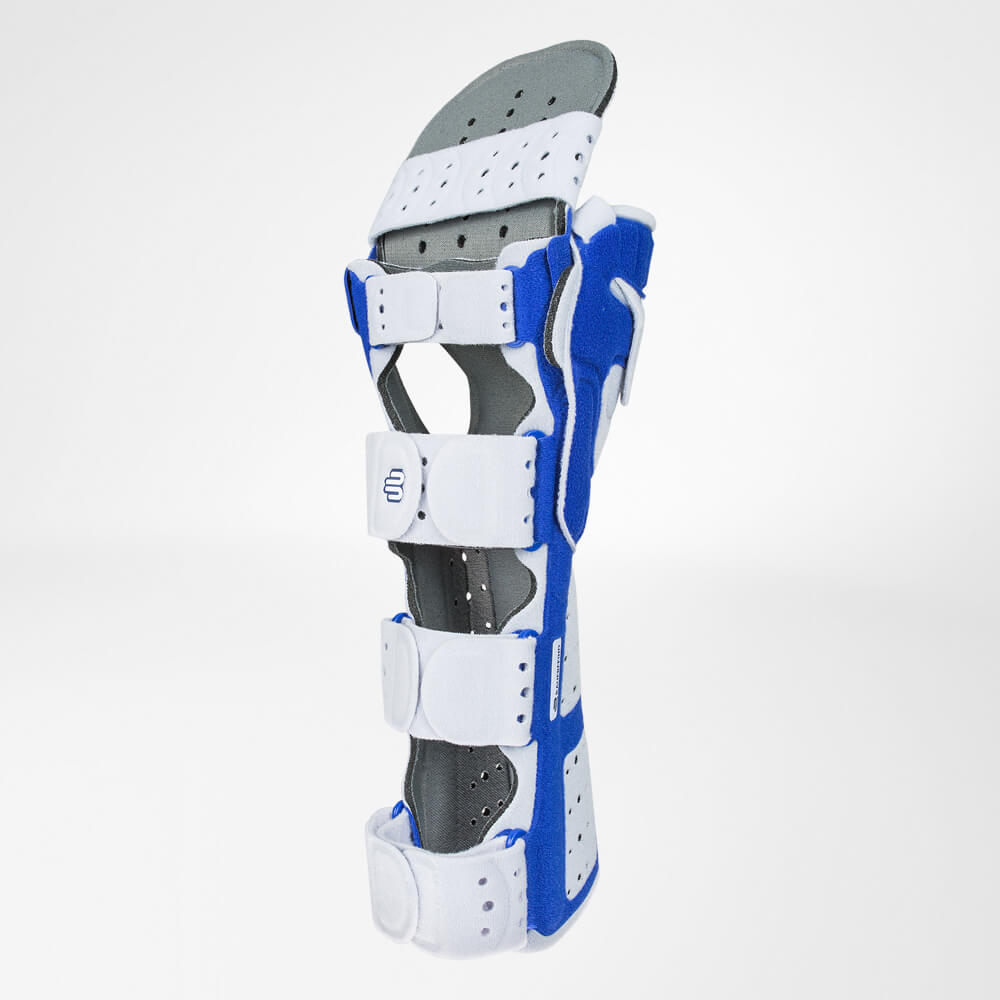Have you noticed pain, reduced strength when gripping or restricted movement in the thumb? - These symptoms can all be signs of rhizarthrosis. While arthosis can't be cured, there are many ways to slow the damage, reduce pain, and maintain hand mobility and strength. Keep reading to learn causes, symptoms and therapy for arthosis of the thumb.
How does rhizarthrosis develop?

In most cases, rhizarthrosis affects the thumb - more precisely: the thumb saddle joint. This joint is formed by the trapezium (carpal bone) meeting the first metacarpal (of the thumb). The pain typical of thumb arthrosis therefore usually occurs near the wrist at the ball of the thumb.
In a healthy state, the joint surfaces of both bones are covered with a protective layer of smooth cartilage. The thin space between the articular surfaces is filled with a fluid called synovial fluid, which serves to nourish the cartilage and provide lubrication for ease of movement.
In cases of rhizarthrosis, the thickness of the cartilage that ensures friction-free movement between the contact surfaces of the bones in the joint decreases and wears out over time.
What are the causes of thumb arthrosis?
Genetic and hormonal influences often play a role, because rhizarthrosis often occurs in the family environment and mainly affects women over the age of 60. Arthrosis in the thumb can also develop as a result of injuries in which the joint surfaces have been damaged, for example wrist fractures.
What are the symptoms of thumb arthrosis?
Direct injury or frequent, repetitive movements with a high level of exertion can damage the cartilage of the joint surfaces, so that the cartilage surfaces come into direct contact with one another. Persistently high stress can then lead to cracking and roughening of the cartilage layer. The abrasion and wear of the cartilage tissue are accelerated by the rough surfaces. The inner skin of the joint capsule often becomes inflamed, which can lead to overheating, swelling and joint effusion.
Pain and loss of strength are the result, spreading the thumb is no longer possible or only possible with pain. Once the cartilage has been damaged, the wear and tear can only be slowed down, but not reversed.
Rhizarthrosis - therapy and prognosis

A healing in the sense of restoring the smooth and healthy cartilage surface is not possible. Nevertheless, there are many methods of treating rhizarthrosis , with non-surgical therapy being the main focus. If the wear and tear has not progressed too far, the joint is immobilized to relieve the strain and pain - for example with a special thumb orthosis . Accompanying pain-relieving and anti-inflammatory drugs are used.
The treatment focuses on maintaining the strength and mobility of the hand and relieving pain. The aim of the therapy is to enable the hand to be used as normally as possible in everyday life and to prevent pain-related misalignments and muscle wasting.
Light exercises under supervision, a home exercise program and a gentle mobilization treatment support the preservation of hand function. Excessive protection of the hand is not desirable, as this could lead to further restrictions.
The use of orthoses for rhizarthrosis - an important therapeutic component
One of the most important treatment principles for rhizarthrosis is the relief of the damaged cartilage. An orthosis such as the RhizoLoc® thumb orthosis is therefore an important part of therapy for conservative and postoperative treatment of rhizarthrosis.
As part of conservative therapy, the RhizoLoc® stabilizes the saddle joint of the thumb and the metatarsophalangeal joint in a neutral central position while the fingers remain free. The extent of the movement restriction can be individually adjusted with an individually adjustable aluminum bracket and a Velcro strap.
The thumb orthosis reduces pain and protects against unwanted movements and loads on the affected joint. The RhizoLoc® can be removed and put on again quickly and easily with your free hand.
Learn More about the RhizoLoc® thumb orthosis here!
In the case of chronic complaints, the RhizoLoc® OA thumb orthosis also offers reliable immobilization and relief for the thumb joint. The airy and light orthosis is characterized by a higher degree of freedom of movement for your everyday activities and a comfortable fit. Since all materials are equally robust, waterproof and easy-care, you can wear the orthosis without hesitation when you wash your hands or do the dishes, for example, if you take off the textile thumb strap.
Learn More about the RhizoLoc® OA thumb orthosis here!

